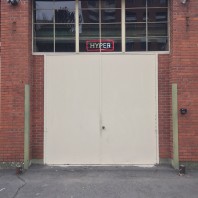
Designing and engineering a system as complex as our liquefier requires many well-meshing parts. To hasten our design progress, we’ve broken up into many teams each semester – each working to perfect their own sub-segment of the project. Many of these teams have had the amazing opportunity to get class credit for their hard work, and have used their section of the project for classwork in either ME 416, “Senior Systems Design,” or ME 316, “Introduction to Systems Design.” Thanks to Prof. Leachman and Dr. Chuck for this amazing opportunity to do something real and world-changing as part of a class!
A brief description of each of our teams follows. Most teams have focused on a particular component of the system, more technical information about the components can be found under the design tab in the sidebar. Each component page represents the progress and effort of one of these teams for a semester to
Jump to a team:
Hydrogen Properties for Energy Research Laboratory (HYPER)
The HYPER lab at WSU developed the novel technologies we’re looking to build out in this project. The lab houses, sustains, and supports Innovation for Sustainable Energy in their goals to improve the sustainability of our local and global energy infrastructure. The following teams from the HYPER lab perform activities that support the development effort.
Thermal Fluids Research Building (TFRB) Facilities
HYPER lab has provided a wonderful working space for students to build out the project. The teamwork required to improve and keep up a top notch working space in TFRB is significant. This is a role everyone has to help with – HYPER lab members as well as members of the student club, and we work well together to keep the facility usable by everyone. Tasks include everything from cleaning the space, keeping track of inventory, placing purchase orders for necessary supplies, and working on I.T. solutions for the lab and student project. In less than a year, we’ve been able to transform a what was once a woodshop into a respectable engineering laboratory, and we’re not done yet. We take to heart the principles of 5-S to ensure the space is always clean, efficient, and usable.
Team Members:
Everyone!

Vortex Tube Experimental Testing
HYPER lab has been funded through a Department of Energy (DoE) grant to the National Renewable Energy Laboratory (NREL) to do some fundamental research on the vortex tube concept as a hydrogen liquefier. While this funding and research is primarily to benefit NREL and the DoE in their development of higher efficiency liquefaction techniques, the findings published from the effort will likely provide a lot of insight for the students developing this project. Student efforts at improving vortex tube design, as part of their ME 416 class has already helped to further develop this research project (See 416 Teams below).
Team Members:
Elijah Shoemake
Carl Bunge
Kevin Cavender
Nathaniel Jones
Casey Evans
Katlyn Struxness
Senior Systems Design (ME 416) Teams
These teams were mostly made up of senior Mechanical Engineering students who got credit for their Senior Design Course. Many of these students have now graduated and moved on to better things, but a few are still around working on the project for the summer. We did have a few students in other departments helping out as volunteers as well – thanks guys!
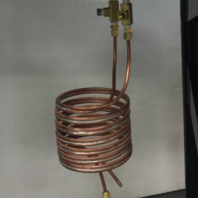
Heat Exchanger
The heat exchanger team is focused on the design of a hydrogen-hydrogen heat exchanger between the cold end of the vortex tube and final liquefaction that occurs in an expansion valve. Their goal is to be able to ensure complete conversion of the cold gas stream to parahydrogen and cool it, recuperating the cooling from boiloff gasses leaving the liquid hydrogen tank.
Team Members:
Taylor Bryant
Will Wilber
Greg Wallace
Kevin Moseley
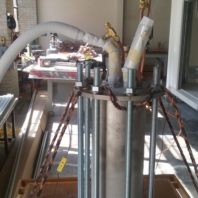
Purification
The purification team has one of the most difficult jobs in the system – get a hydrogen stream from 99% hydrogen to 99.9995% hydrogen. They are focusing on using cryogenic methods to ensure the removal of all impurities in the gas stream. Because of the difficulty of the problem, the first goal was to design a system that would use a liquid nitrogen cooling loop to remove nitrogen impurities from an input hydrogen stream.
Team Members:
Scott Bredberg
Derek Johnson
Steven Bell
Andrew Raub

Vortex Tube
The vortex tube team is working to design a cryogenic-rated, highly configurable, vortex tube for use with hydrogen. Their efforts are focused on a fully parametric CAD design, that when coupled with our in-house machining capability, creates the perfect workflow for rapid prototyping cycles. With how little design information is available on vortex tubes at cryogenic temperatures and/or with hydrogen as a working fluid, these design-test-design cycles will be critical to achieving good performance.
Team Members:
Mitchell Scott
Nathaniel Jones
Joseph Dufresne
Tyler Morton
Nathan Clarke
Systems Design (ME 316) Teams

These teams are mostly made up of junior Mechanical Engineering students getting credit for their Systems Design course.
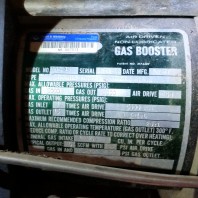
Compressor
Compressors have been the Achilles heel of hydrogen refueling stations worldwide. Our team intends to change that. Instead of a typical 10,000 psi compressor we are going after a reasonable 1400 psi. This is attainable thanks to our patent pending vortex tube system. One of the biggest faults in previous hydrogen refueling stations has been the compressors. To pack enough hydrogen into a small tank, hydrogen powered cars use high pressure gas tanks as storage. Current models of cars use 10,000psi tanks, so refueling stations must produce hydrogen hydrogen at that pressure. Conventional stations use only compressors to achieve this. But at such high pressure, mechanical failures are common, causing excessive down time and costly repairs. Our method of compression through liquefaction is intended to minimize this risk by using low pressure compressors. The compressors drive the liquefaction process, providing enough pressure for the vortex tube and throttle valve to operate. These will liquefy the hydrogen which can be boiled to produce pressures even higher than 10,000psi.
Team Members:
Fall 2015:

Cameron Stone
Greg Wallace
Nathaniel Jones
Riley Howard
Will Wilber
Spring 2016:
Kirsten Hirzel
Jasper Haney
April Saavedra
Tyler Scott
Lance Alderson,
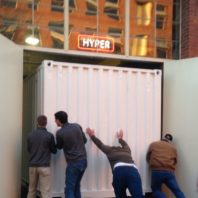
Container
Think outside the box by staying inside the box!
Our method of using shipping containers to house our hydrogen fueling station lends a new level of modularity to the hydrogen fueling world that has never been seen before. This modularity will give us the unmatched ability to drag and drop our fueling stations to many location based on customer needs or desires. By evolving the concept of what a mobile hydrogen station can be, we have created a paradigm shift in the modularity and mobility of hydrogen fueling.
Team Members:
Fall 2015:

Kevin Mosley
Tim Pizzino
Mario Reillo
Nolan Beal
Scott Bredberg
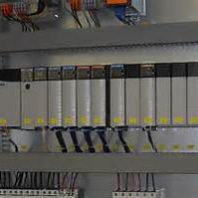
Control Systems
“Nine subsystems were gifted to the class of ME316, who above all else desired power. But another subsystem was created to run them all and in disaster, smite them.” Look into any major manufacturing facility in the world and you will likely see a PLC behind it. The best hardware ever built cannot reach its true potential without a well made PLC controlling it. In our hydrogen fueling system the PLC is the brain behind the whole system, capable of making or breaking the entire project.
Team Members:
Spring 2016:

Jay Pittenger
Cody Sweat
Jake Hibbard
Christopher Marrinan
Rick Scholz
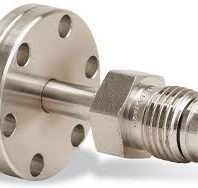
Fittings
Just like the internet, your system is only as good as your connections. This is why piping and fittings are the most important component of any fluid system. Leaks are most likely to occur at the fittings and are inevitable in any fueling station. This can lead to long shutdown times and in extreme cases of catastrophic failure. Our mission is for the system to immediately detect leaks, resulting in a temporary shutdown in which the necessary repairs can be done. Repairs will be much faster than typical fueling stations due to the modular design. This will result in shorter lag times, which is ideal because when the fueling station is not running it’s not making money.
Team Members:
Fall 2015:

Eli Romanoff
Mundher Alsinaidi
Tyler Maurer
Bryan Noble
Kyle Deatherage
Spring 2016:
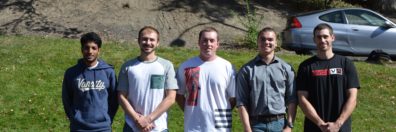
Ibrahim Alazri
Brett Love
Wyatt Linville
Malcolm Wynn
Daniel Pollastro
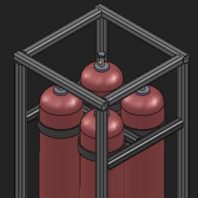
Hydrogen Storage
Our goal is to store high pressure H2 gas at up to 3000psi in a series of buffer tanks to moderate the hydrogen flow rate to the liquefier.
Team Members:
Spring 2016:

Gordon Tassel
Andrew Underhill
Abdallah Alqassabi
Thomas Myrum
William Muelhlhausen

Insulation
Scope: Provide fire resistance for the system through insulation.
Goals: Maintain a safe fire resistant product while meeting the code for fire resistance with respect to hydrogen.
Team Members:
Spring 2015:

Michael Roetcisoender
Muayad Aljabri
Katherine Lake
Thong Tim Nguyen
Daniel Stakhovich
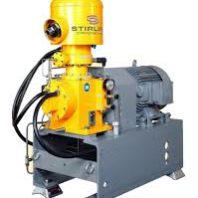
Precoooling
The Pre-cooling team will design a way to cool the hot hydrogen gas down to a temperature that can be used by the vortex tube to be turned into a liquid. This represents some serious design challenges because we are dealing with a huge temperature difference for the hydrogen which requires a large amount of energy to be drawn out from the hydrogen. Not only do we have to remove a large amount of energy from the hydrogen but we also have to efficiently do so at cryogenic temperatures.
Additionally, few systems exist which can efficiently do these things for us. Our cooling system will require customized systems and components to reach our output requirements and achieve our goals.
Team Members:
Fall 2015:

Jordan DeGroot
Gerardo Perez
Neil Baldwin
Usama Al Ramadhani
Al-Harith Al Harthy
Chandler Luke
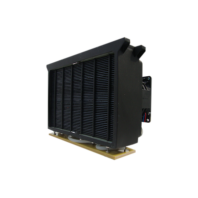
Power
Scope: To find the optimal, safe power solution for refining hydrogen.
Goals: Our goal is to provide power to the system, as well as an alternative backup solution in the case of a power outage.
Team Members:
Spring 2016:

Qusiy Almukhaini
Muayad Alaraimi
James Crews
Changsong Ding
Michael Wood

User Interface
Cruisin’ down the street in your six-four
Runnin’ on empty, Needin’ some torr
Well our station’s mind blowin’, Givin’ everybody chills
Call us H2 Refuel, Cause we’re selling everybody fills
We have a nice container, We got what you need,
Liquid hydrogen, Get as much as you please
The rhymes are still flowin’, But we gotta get goin’
This user interface is sick, Got my fill and got outta there quick
Team Members:
Fall 2015:

Tucker Stone
Michael Towne
Drew Christian
Jeff Bauer
Lachlan Sinclair
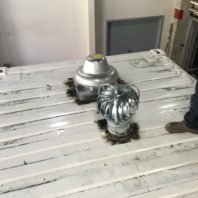
Vascular Venting
Vascular:
- adjective: (biology, anatomy) of, relating to, or having vessels that conduct and circulate fluids.
Scope:
- In the event of a hydrogen leak our system will ventilate the leaked gas.
Goals:
- No more than 1% hydrogen by volume in the container. Hydrogen is flammable in air at 4%-75% by volume. NFPA 2 (Hydrogen technologies code)
Team Members:
Spring 2016:

Jake Enslow
Austin Rapp
Mohammed Albreiki
Taylor Sanderso
Zijue Wang
Max Welton
